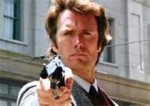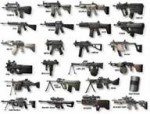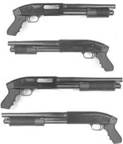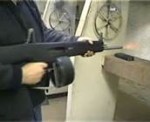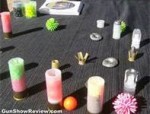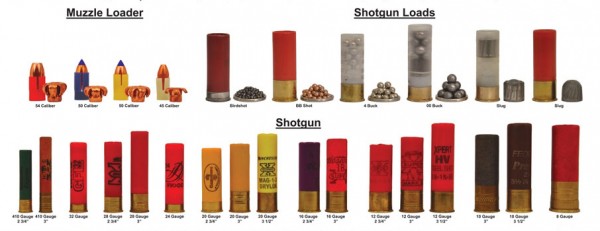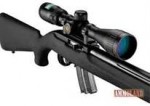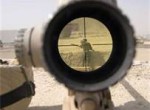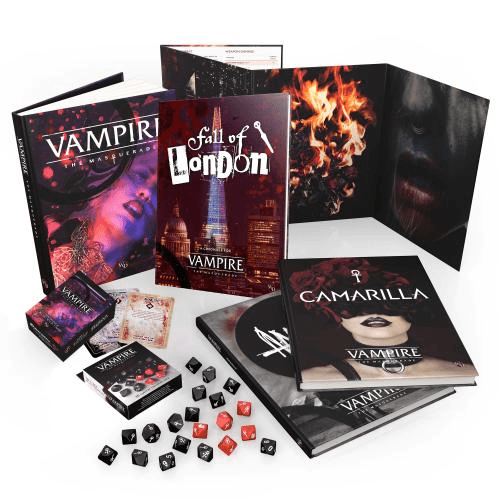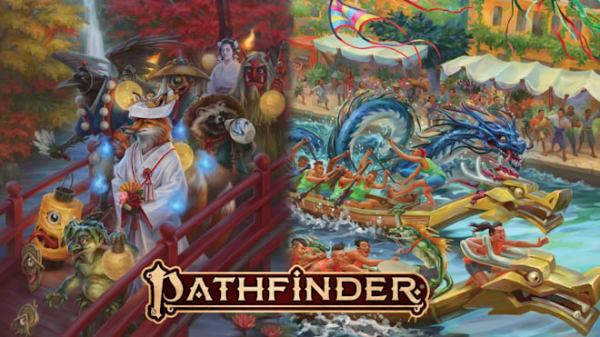Guns in Games, a Primer
By Cape Rust
With the huge debate over guns and gun control, I figured it would be a great time to poke the lion and write an article or series of articles on guns in games. Now I could go into a disclaimer about how Roleplayers Chronicle doesn’t take political stances or advocate violence, but we are talking about guns in role-playing games here, so no need for such trivial things. This series of articles is self-explanatory; I will offer this primer as a foundation for those GMs who have little or no knowledge about guns.
Each game that has guns has rules to handle the types of damage they do and the rolling mechanics behind these weapons. I am going to try to leave all of that behind and make guns easier for a GM to describe and make them more interesting for the players to hear about. The key here is that with a little real world knowledge about guns, as a GM you can really breathe some life into any game that involve guns or firearms. For the rest of this article I will use guns rather than firearms, because it is much quicker to type. I am going to try to avoid using dictionary terms as well; because let’s face, it those authors were not writing for entertainment. Speaking of terms, why don’t we establish a mini-dictionary to help out those folks who fall into the little or no knowledge category? Remember, you won’t learn if you don’t open your mind to learning.

Bullets: Sometimes called rounds (possibly in honor of the first bullets which were round balls of lead). Those flying bits of lead and other hard metals that fly from guns to destroy objects or enemies. Bullets range from really small (.22 Cal) to really big (.50 Cal). Often expressed as Caliber (Cal) or in the Millimeter (MM). The Caliber or Millimeter represents the size of the bullet. Normally the larger the Cal or MM the larger the bullet.
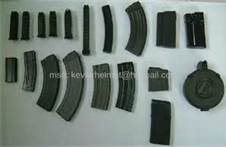 Magazine: The place where bullets are held. Magazines can be internal or external and can be fixed or removable. Some shotguns and rifles have tubular magazines normally located below the barrel. Sometimes magazines are called a clip.
Magazine: The place where bullets are held. Magazines can be internal or external and can be fixed or removable. Some shotguns and rifles have tubular magazines normally located below the barrel. Sometimes magazines are called a clip.
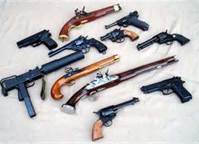 Pistol: Hand held, smaller than most other guns, can be fired one handed, more accurate when fired with two. Pistols are normally easier to hide or conceal than other guns and are generally shot at closer ranges.
Pistol: Hand held, smaller than most other guns, can be fired one handed, more accurate when fired with two. Pistols are normally easier to hide or conceal than other guns and are generally shot at closer ranges.
Revolver: A gun, normally a pistol, that uses a cylinder as its magazine and generally holds between 5 and 9 shots depending on how small the gun is and how big the bullet is. There are normally two types of revolvers: single and double action. A single action revolver (think the revolvers in western movies) requires the hammer (small pointy thing just above the handle) to be manually pulled back or “fanned” (method of using ones hand to rapidly re-cock the hammer made famous in Wild West movies) to cock the weapon and allow it to be fired. Double action (think most modern revolvers like the one used by Dirty Harry) re-cocks the hammer every time the trigger is pulled.
Automatic: Often called a machine gun. This gun fires lots of bullets really fast. This type of gun will keep firing as long as the shooter holds down the trigger. These guns tend to use magazines or can be belt-fed (think the machine gun that Rambo used). The smaller weapons tend to be less accurate when fired on full auto.
Shotgun: There are several varieties of shotguns, including single-barrel, double-barrel, pump action, semi-automatic and even automatic. A single-barrel shotgun is normally a single shot shotgun in which the barrel “breaks open” to load the shell. A double barrel loads in the same manor but has two barrels. A pump action shotgun requires the shooter to manually “pump” the next round into the chamber. A semi-automatic shotgun fires every time you pull the trigger and an automatic shotgun (ouch!) fires as long as you hold down the trigger. Shotguns are so named because they shoot “shells” that are normally mostly plastic and contain various sized pellets (AKA shot) that spread out after fired to increase the chance to hit or to put multiple holes in a target. Shotguns are often used for hunting, home defense and riot control. Shotguns are judged by their gauge (in the case of the shotgun, the lower the gauge the larger and more powerful it is). The larger the pellets a shotgun fires, the more potential damage they do. Shotguns can also shoot slugs which are similar to over-sized bullets. Shotgun shells can be loaded with more than just slugs and pellets; they have been loaded with non-lethal projectiles, such as rubber pellets and small bean bags, that can knock a grown person off their feet without killing them. There are tear gas rounds and even rounds used to breech doors.
Optics: Sometimes called scopes, sights, or red dots, are devices that magnify a target or allow a shooter to acquire or better acquire a target. Theses sights can be enhanced with things like gun mounted flash lights and laser sights. Some sights allow the user to see at night, these are called NVGs, Starlight Scopes, or simply night vision.
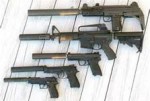 Silencer: Sometimes called a suppressor or a can. The object of a Silencer is to mitigate or reduce the sound that a gun normally makes when fired. Silencers can be placed on pistols and rifles.
Silencer: Sometimes called a suppressor or a can. The object of a Silencer is to mitigate or reduce the sound that a gun normally makes when fired. Silencers can be placed on pistols and rifles.
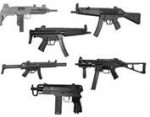 Submachine Gun: The submachine gun is designed to place a large amount of bullets on a target at a close range, very quickly and in a small package.
Submachine Gun: The submachine gun is designed to place a large amount of bullets on a target at a close range, very quickly and in a small package.
I have just scratched the surface on types of guns, the ammo they fire and terms associated with them. I know I lost some of my more gun savvy folks early on in this primer, but this article really wasn’t intended for them. I hope this can act as a quick reference guide for you when running a game and the subject of guns comes up. You can let your players know that the bad guy is wielding a pump action shotgun and based on the circumference of the barrel, it looks like it is a 12 gauge, oh yea and it is pointed at you! With very little information you can sound really gun smart with very little effort. Even if you are not a fan of guns in general, but are running a game that involves guns, you owe it to your players to learn a little about them so they don’t think you are just shooting in the dark. If there are things I left out please add your comments as this article is designed to be helpful to all GMs who might not know much about guns. Most sourcebooks will give brief descriptions of the different types of guns as well as individual guns; at the very least focus on this part of the rulebook so you can give your players the best game possible.



